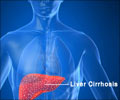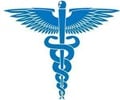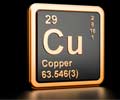Penicillamine Medication Information
Learn everything you need to know about Penicillamine-pronunciation, uses, dosage guidelines, indications, and when to take or avoid it.
Get up-to-date information on side effects, precautions, warnings, and proper storage to ensure safe usage.
Explore Penicillamine brand names commonly used in India and internationally, along with detailed pricing information. Consult your healthcare provider for tailored medical advice.
Generic Name : Penicillamine Pronunciation : PEN-ih-SILL-ah-meen ICD Code : Y45.4 Therapeutic Classification : AntirheumaticsBrand Names or Trade Names of Penicillamine
India :
International :
Cuprimine, Depen
Why is Penicillamine Prescribed? (Indications)
This medication is a chelating agent (remove heavy metals from the body), prescribed for Wilson disease (excess copper in the body), severe rheumatoid arthritis that has not responded to other treatments, and cystinuria (excess amino acids in the urine, which causes kidney stones).When should Penicillamine not be taken? (Contraindications)
Contraindicated to pregnancy and breast feeding, patients with history of moderate to severe kidney problem, prior penicillamine induced bone marrow problem, severe allergic reactions.What is the dosage of Penicillamine?
Oral- Wilson's disease- Adult: Initially, 1.5-2 g daily in divided doses. Maintenance dose: 0.75-1 g daily. Doses titrated to maintain urinary copper excretion >2 mg/day. Patients should receive pyridoxine supplementation 25 mg/day. Max: 750 mg/day in older adults.Child: 1 month-12 years: 2.5 mg/kg bid, increased every 1-2 weeks to 10 mg/kg bid. 12-18 years: 0.75-1 g bid, max: 2 g daily for 1 years; usual maintenance 0.75-1 g daily. Doses titrated to maintain urinary copper excretion >2 mg/day. Patients should receive pyridoxine supplementation 25 mg/day.
Cystine calculi- Adult: 1-4 g daily in 4 divided doses. Usual dose: 2 g/day. If 4 equal doses are not possible, give largest dose at bedtime. Doses adjusted to limit cystine excretion to 100-200 mg/day (<100 mg/day with history of stone formation). Patients should receive pyridoxine supplementation 25 mg/day.
Child: 1 month-12 years: 5-10 mg/kg bid, 12-18 years: 0.5-1.5 g bid. Doses adjusted to limit cystine excretion to 100-200 mg/day (<100 mg/day with history of stone formation). Patients should receive pyridoxine supplementation 25 mg/day.
Lead poisoning Adult: 1-2 g daily in 3 divided doses. Continue treatment until urinary lead is stabilised at <500 mcg/day. Child: 20 mg/kg/day in 3 divided doses. Elderly: 20 mg/kg/day in 3 divided doses.
Cystinuria Adult: 1-4 g daily in 4 divided doses. Usual dose: 2 g/day. If 4 equal doses are not possible, give largest dose at bedtime. Doses adjusted to limit cystine excretion to 100-200 mg/day (<100 mg/day with history of stone formation). Patients should receive pyridoxine supplementation 25 mg/day.
Child: 1 month-12 years: 5-10 mg/kg bid, 12-18 years: 0.5-1.5 g bid.
How should Penicillamine be taken?
Should be taken on an empty stomach. (Take on an empty stomach 1 hr before or 2 hr after meals, & at least 1 hr apart from any other drug, food, milk, antacid, Zn- or Fe-containing prep.)What are the warnings and precautions for Penicillamine?
• Wilson's disease and cyst in urine (25 mg/day) continued on a daily basis once instituted; kidney impairment; penicillin allergy;Monitor urine for protein in urine and haematuria (blood in urine), blood and platelet counts regularly.
Withdraw permanently if decrease in the number of white blood cells or platelets occurs.
• Regularly monitor kidney and liver function (every 6 month).
Monitor body temperature twice weekly during 1st month of therapy, then every 2 wk for 5 month, then monthly.
Counsel patient to report sore throat, fever, infection, non-specific illness, unexplained bleeding or bruising, mouth ulcers or rashes.
In cyst in urine, maintain adequate fluid intake (1 pint of fluid before bed and 1 pint of fluid during night).
• Caution should be exercised in patients who have had previous adverse reactions to gold.
What are the side effects of Penicillamine?
Central Nervous System- Peripheral sensory and motor nerve disease (including Guillain-Barré syndrome), psychic disturbances, mental disorders, agitation, anxiety.Skin- Hives, scaly inflammation of the skin, hair loss, mucocutaneous disease, detachment of the top layer of skin from the lower layers of the skin, increased skin friability, excessive wrinkling, development of small white papules at venipuncture(IV therapy) and surgical sites, yellow nail syndrome.
Eye and ENT- Perception of sound within the human ear in the absence of corresponding external sound, inflammation of optic nerve, visual disturbances.
Gastrointestinal- Loss of appetite, abdomen pain, nausea, vomiting, diarrhea, diminished taste perception, peptic ulcers, inflammation of pancreas, oral ulcers.
Hormone- Inflammation of thyroid gland.
Blood- Decrease in white blood cells, platelets, and red blood cells, increase in number of monocytes in blood.
Liver- Drug induced liver disease.
Musculoskeletal- Joint pains, chronic autoimmune neuromuscular disease, involuntary movements.
Kidney- Protein in urine, blood in urine, kidney disorder, kidney failure.
Respiratory- Allergic Inflammation of the alveoli, irreversible lung disease, progressive scarring of both lungs, bronchial asthma.
Miscellaneous- Allergy, including generalized itching with early and late rashes, blistering; drug eruptions, autoimmune disease, vein inflammation, elevated body temperature, muscle inflammation, connective-tissue disease, increased size of breast, abnormal elastic tissue fibers, inflammatory destruction of blood vessels.








